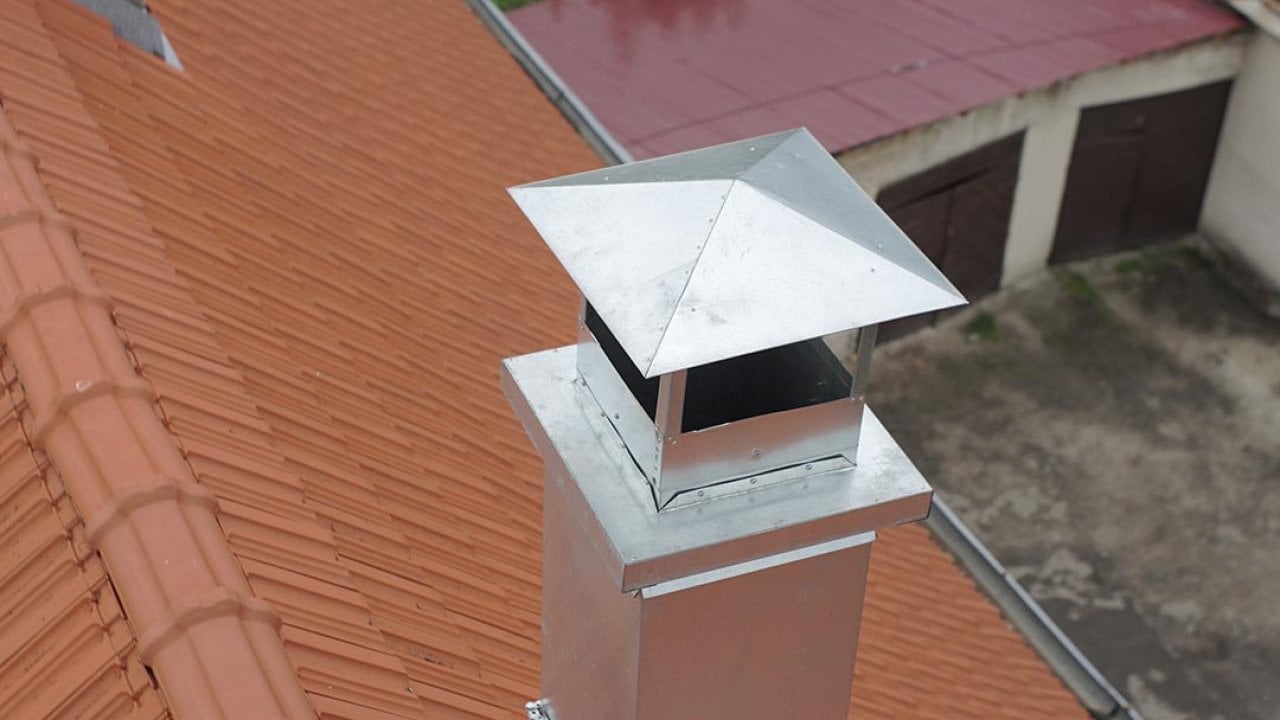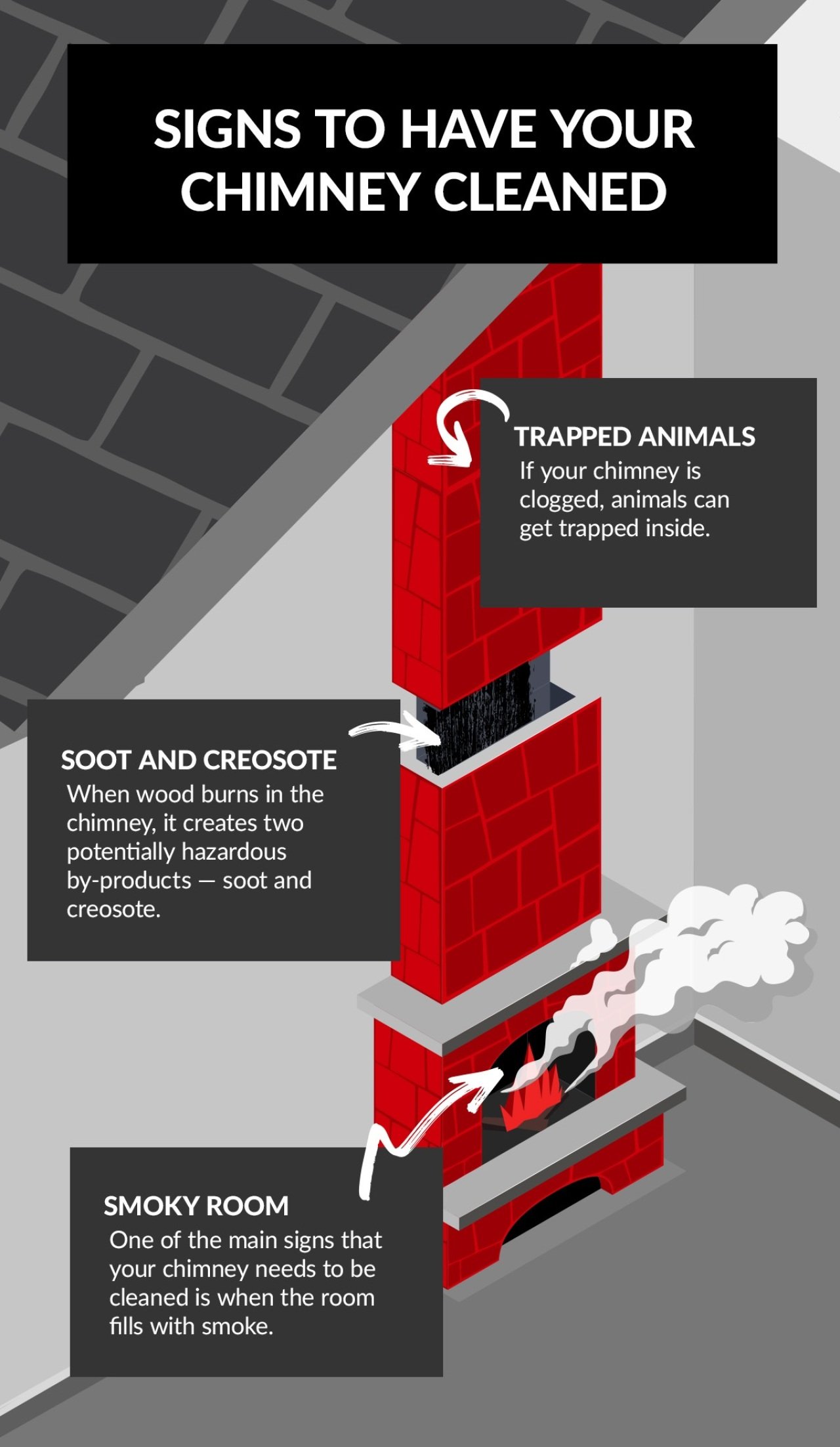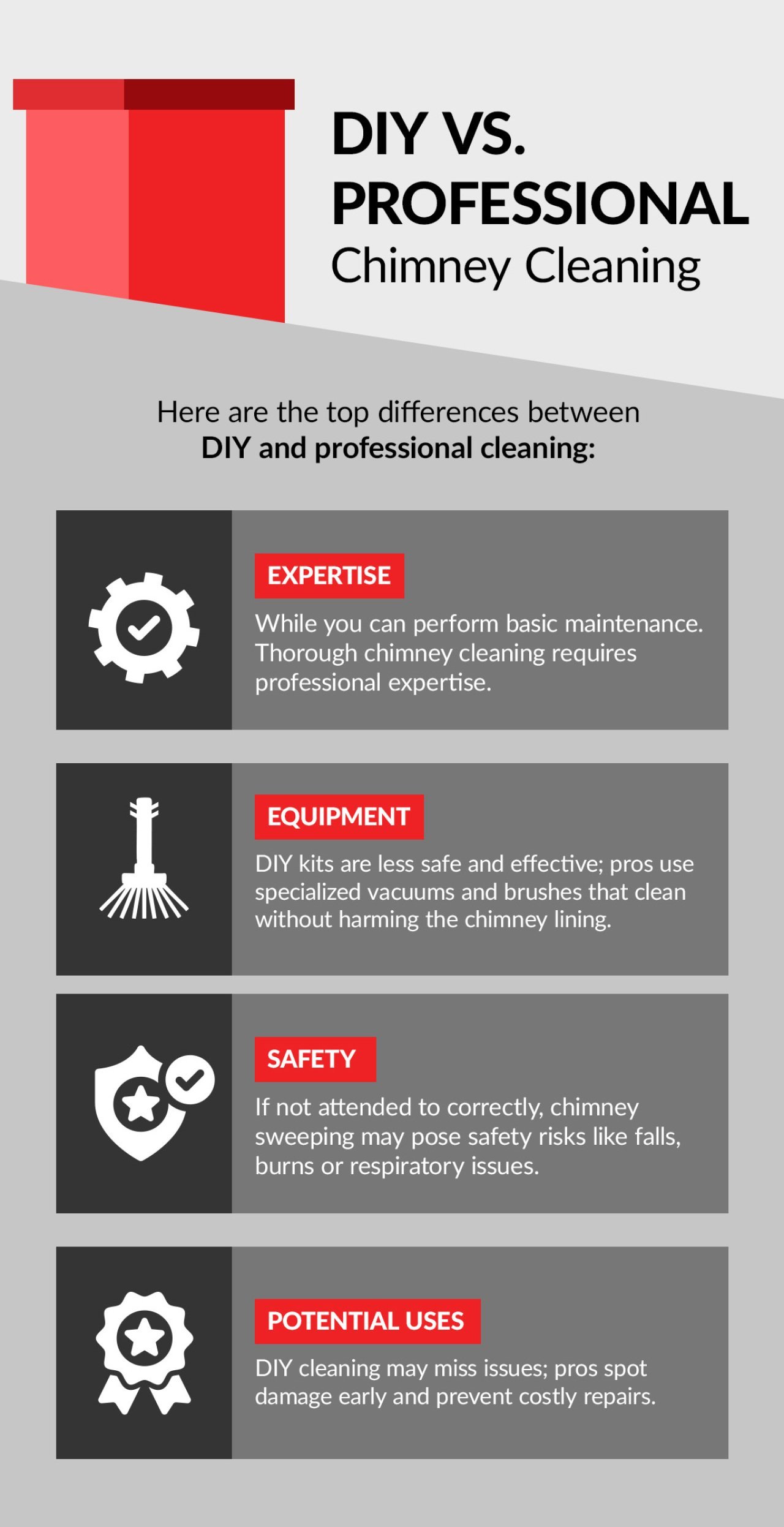The ultimate guide to chimney sweeping

KOBRYN TARAS // Shutterstock
The ultimate guide to chimney sweeping
From grand Victorian mansions to humble country homes, chimneys have a rich history of keeping homes warm and creating a more comfortable atmosphere. Historically, chimney sweeping has been infamously hazardous. However, modern, refined cleaning services allow for safe and effective sweeping.
Chimney sweeping is necessary to remove potentially dangerous layers of soot and creosote and keep your home safe and cozy. This complete guide from Smoke Alert Home Fire Safety covers everything you need to know about the process.
Why Is Chimney Cleaning Important?
According to the National Fire Protection Association (NFPA), three out of every 10 house fires are caused by poorly maintained fireplaces and dirty chimneys. This statistic emphasizes the importance of chimney cleaning. Several other associated benefits and risks include the following.
- Improves heating effectiveness: Clearing debris from the chimney creates a clean and thorough burn that allows adequate amounts of oxygen to reach the wood. The air is warmer and more comfortable to breathe, free from smoke or burning odors.
- Prevents chimney fires: Over time, debris builds up in the chimney, damaging the lining and creating creosote, which can trigger a fire even in small amounts. Regular sweeping can prevent this debris from collecting along the chimney walls and remove potentially hazardous creosote.
- Prevents carbon monoxide poisoning: Every year, CDC data shows over 400 Americans fall victim to accidental carbon monoxide poisoning not caused directly by fire. When dirt, debris and creosote build up in the chimney, it prevents the release of toxins and smoke through the outlet. Carbon monoxide is a by-product of this process. Cleaning the chimney regularly prevents the buildup of debris that can cause carbon monoxide.
- Ensures a smooth flow of smoke: Debris can block the flow of smoke and push contaminants into your home. Blocked smoke can make the air difficult to breathe, and the ash can damage your furniture. Chimney cleaning can save you from costly repairs to damaged furniture, make the air smoother and create an easy outlet for smoke.
Signs to Have Your Chimney Cleaned

Smoke Alert Home Fire Safety
If you’re wondering when to clean your chimney, there are some key signs to look out for. Routinely check its condition so that it’s adequately maintained before it builds up thick layers of debris. While you can do an occasional chimney clean on your own, some signs strictly call for professional chimney sweeping. Here are some of the signals to look out for.
Soot and Creosote Buildup
When wood burns in the chimney, it creates two potentially hazardous by-products — soot and creosote. Soot is a by-product of incomplete combustion that usually creates a dark brown or black, flaky, oily residue.
Creosote naturally occurs when you burn fossil fuels. It has an ashy black or brown appearance and can look flaky, glazed or puffed. Every time you use your chimney, more layers build up, which prevents sufficient air from getting through.
When soot and creosote build up, they can block ventilation and pose a fire risk. Here are the best methods to check for creosote and soot in your chimney.
- Check the liner: Put on a pair of gloves and scrape the liner inside the flue. If there’s a thick layer of soot or creosote, call a professional chimney sweeping service.
- Inspect the flue: The flue is the pipe that carries smoke outside your house. If you shine a flashlight inside it, you’ll see if there’s excess buildup of soot and creosote. Look for a tarlike coating with powdery black or brown layers.
- Look out for airflow issues: When soot and creosote build up, they can prevent sufficient airflow. You can spot this issue if smoke fails to flow up the chimney or the fire burns out quickly.
Smoky Room
One of the main signs that your chimney needs to be cleaned is when the room fills with smoke. Chimney smoke clings to your clothes and nearby furniture, so it’s not just unsightly — it also leaves a lingering odor. There are three main reasons why the room would fill with smoke.
- Wood: The wood may be poor-quality or wet.
- Damper: The damper could be closed.
- Debris: The chimney may have a thick layer of debris obstructing airflow and causing excess smoke.
Trapped Animals
Birds, rodents and other small animals may be drawn to the warmth of the chimney. If your chimney is clogged, animals can get trapped inside. Lighting a fire could be fatal for these critters due to smoke inhalation.
Regularly checking and cleaning your chimney can prevent these animals from getting stuck. A dirty chimney also won’t create the same heavy smoke on the outside, which creates a safer environment for birds who like to nest along the chimney walls.
The Environmental Impact of Dirty Chimneys
Without proper cleaning and maintenance, chimneys can create potentially toxic emissions and lead to air pollution both inside and outside the home. Maintaining your chimney is essential to prevent the release of hazardous gases and keep the air comfortable in your house. Here are the key environmental risks of dirty chimneys.
Increased Pollution
When chimneys build up soot and creosote, they release harmful gases like carbon monoxide when they are in use. These dangerous gases can enter your home. Chimneys also release more pollutants into the environment, which can affect surrounding birdlife and greenery. When chimneys aren’t properly cleaned, they don’t properly release gases, causing them to linger in the chimney for longer.
Burning materials like plastic or paper can create more soot and hazardous gases that can be harmful to your health and the environment. Some toxic chemicals that may be released include sulfur dioxide, nitrogen oxides and polycyclic organic matter (POM).
Getting your chimney regularly cleaned prevents the buildup of these harmful pollutants, lowering the carbon footprint of your chimney usage and keeping the air in your home free of toxic gases. To further reduce the potential for toxic fumes, avoid putting anything other than seasoned wood pellets into your chimney.
Risk of Fires
Fires from chimneys can cause toxic gases to fill the air inside your home, damage your furniture and pollute the air. They also require resources like water to put the flames out. The Chimney Safety Institute of America recommends that masonry fireplaces be cleaned when there is one-eighth of an inch of sooty buildup. Experts believe this amount is sufficient to cause a chimney fire in the right circumstances, so it’s crucial that homeowners routinely check for this.
Chimney fires can have a significant negative impact on the environment, especially because they result in incomplete combustion and the release of harmful gas emissions. These fires can grow rapidly and spread to surrounding structures, resulting in more damage to surrounding properties and natural environments.
How Often Should You Clean Your Chimney?
The NFPA recommends that chimneys be inspected and cleaned every year by qualified professionals. While this is a good rule of thumb, there are other factors to consider when determining how often to clean your chimney.
Both wood and gas fireplaces build up a significant amount of soot and creosote. Typically, gas burns more cleanly than wood, leading to less rapid buildup. If you use the fireplace frequently year-round, you’ll need to clean it more often, especially if it’s wood. Seasoned wood will build up less soot because unseasoned wood has more moisture.
If you use only seasoned wood, you can stick to annual cleanings. However, if you throw in the occasional unseasoned log, you may need to look into cleaning every few months to slow down creosote buildup.
Depending on the climate, some homeowners use their fireplace year-round, while others only use it for a few months. If you use your fireplace more frequently, it will collect more debris rapidly. As a result, you’ll need to sweep the chimney more often.

Smoke Alert Home Fire Safety
DIY vs. Professional Chimney Cleaning
When left unattended, chimneys can accumulate potentially toxic and flammable substances. Cleaning your own chimney can be challenging and sometimes even dangerous, often making professional chimney sweeping a better option. Here are the top differences between DIY and professional cleaning.
- Expertise: Chimney cleaning may seem like a straightforward chore you can do yourself. While you can perform basic maintenance, it takes professional knowledge to understand the structure of the chimney and safety protocols to clean thoroughly without causing injury or damage.
- Equipment: You may find DIY chimney cleaning kits that come with rods and brushes. While you can use some tools for general maintenance of the fireplace and chimney, they are not as effective or safe as those used by professionals. Experts use specialized tools like vacuums and high-quality brushes that clean the chimney without damaging the lining.
- Safety: If not attended to correctly, chimney sweeping may pose safety risks like falls, burns or respiratory issues. Professionals wear specialized anti-slip shoes that prevent falls and protect the roof or solar panels. They are also knowledgeable in protocols like ladder safety, and they have protective gear like goggles and masks to protect themselves from soot.
- Potential uses: Homeowners may overlook potential issues in the chimney while cleaning. They may also lack the experience and knowledge to identify structural damage, cracks or leaks in the chimney. Professionals look out for these things while cleaning, and they have the equipment and knowledge to do so. Professional cleaning could save you money down the line, as leaving these issues untreated can result in costly repairs.
What to Expect During a Chimney Sweep
When getting professional chimney sweeping, you can expect the following typical steps.
- Confirm the appointment: The chimney sweep company will confirm the appointment time and make sure everything is in place before they arrive.
- Prep the chimney: The chimney sweep professional will prep the area and identify any major issues before they begin. They will likely lay some plastic sheeting over your furnishings or floors to protect them.
- Sweep the chimney: The professionals will thoroughly sweep the chimney using a heavy metal bristled brush, typically working their way from the flue. They scrape off any coating that has accumulated on the chimney lining until it’s clean.
- Remove obstructions or animals: If any obstructions or animals are trapped in the chimney, chimney sweeps can safely remove them.
- Vacuum excess debris: Once the chimney lining is swept and any obstructions are removed, the chimney sweeps will vacuum any mess and remove any protective tarp.
- Provide a report: Upon leaving, the chimney sweep will provide you with a report on the status of your chimney. This report will mention any potential structural issues identified so you can repair them in a timely manner.
FAQs
Here are some commonly asked questions about chimney sweeping.
How Should You Prepare for Your Chimney Sweeping Appointment?
To prepare your chimney for a sweeping appointment, avoid using it for at least a day before the service. Move any furniture, rugs or antiques away from the chimney to protect them from debris that may fall out during the sweeping. Ensure you find a certified company with the expertise to sweep the chimney safely and effectively.
How Do Professionals Clean Chimneys?
Chimney sweeps use specialized equipment to clean chimneys. They use metal rods with bristles to remove layers of soot, creosote and debris from the chimney lining. They also wear protective gear like masks, goggles and gloves to protect themselves from soot that comes off during the sweeping process.
Can You Clean out Your Own Chimney?
You can clean out your chimney yourself if the buildup is minimal, but you should still get it cleaned professionally at least once a year. If the buildup is thicker than one-eighth of an inch, you need to call a professional.
Don’t Neglect Chimney Sweeping
The main takeaway from this chimney sweeping guide is that chimney sweeping should never be neglected. Regularly cleaning your chimney can help maintain its structural integrity and save you money on repairs down the line. It also prevents soot and creosote — which release toxic gases into your home and the environment — from accumulating.
Chimney sweeping can also prevent blockages, remove hazards and boost your chimney’s efficiency. Professional cleanings ensure any thick layers of debris are swept off, leaving you with a clean chimney and a comfortable home.
This story was produced by Smoke Alert Home Fire Safety and reviewed and distributed by Stacker.
![]()



